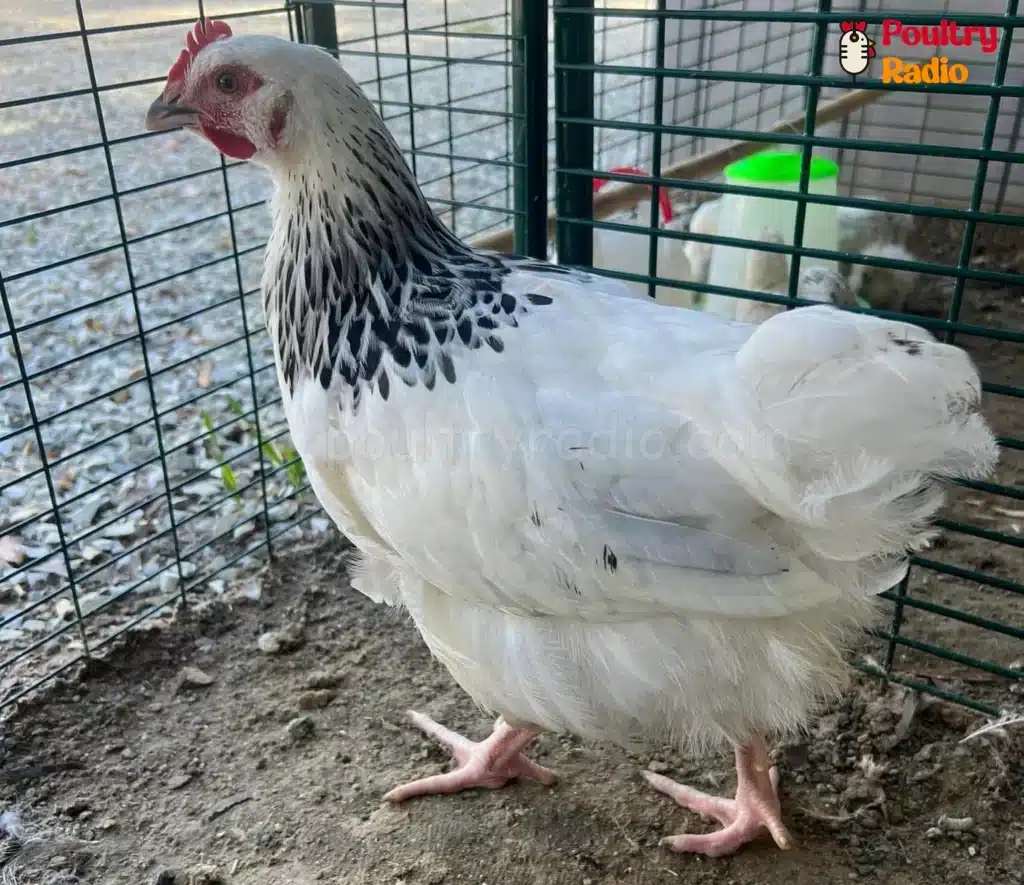Sussex Chicken: A Breed Review & Characteristics
The delightful Sussex chicken breed has been a cherished and beloved hen for centuries, proving itself as a versatile dual-purpose bird. With a fascinating history, it has persisted through various trends in the poultry world. Though not flashy, Sussex has maintained consistent success for years and is now set to gain popularity in the U.S. due to its reputation for reliable egg-laying, quality meat, and gentle nature.
This article will discuss the history of the breed, varieties that are known to exist, the ability to lay eggs, particular care needs, and whether or not a Sussex is the right bird for you.
Background and History Sussex Chicken
In London in 1845, the first-ever poultry show took place.
A Sussex or Kentish fowl chicken was one of the earliest exhibits.
This marked the start of the “Sussex breed“.

It is believed that the earliest birds were present in England during the Roman invasion in 43 A.D. Of course, they didn’t resemble chickens today at all back then.
It’s believed that the initial colors were speckled and possibly brownish-reddish.
Over time, these chickens were crossed with the fowl brought by the Romans.
Nevertheless, the real era of breed and color enhancement began during the Victorian era when the nation was swept up by hen fever.
Many ‘exotic’ chickens were imported, which gave poultry enthusiasts lots of opportunity to develop new breeds.
To achieve the present-day appearance of a sturdy and well-proportioned bird, the Sussex was bred with a variety of breeds, including Cochins, Dorkings, and Brahmas.
The London markets were primarily supplied with poultry by the counties of Sussex, Surrey, and Kent, and the Sussex hen was developed specifically to meet the needs of this market.
It was quite successful in this field up until the 1940s and 1950s when the broiler industry began to grow.
At the time, the Sussex chicken was regarded as the best-eating fowl.
The demand for Sussex never completely disappeared, even though broilers became more popular.
It was passed over for a bird that matured more quickly (Broilers). Nonetheless, traditionalists continued to desire after it, which is how the Sussex survived.
Sussex Chicken Characteristics and Appearance
As usual, acceptable colors differ from region to region. The British Poultry Club recognized the following:
- Light Sussex Breed, Red Sussex Chicken, and Speckled Sussex Chick – 1902
- Brown Sussex Chicken – 1913
- Buff Sussex Breed – 1920
- White Sussex – 1926
- Silver Sussex Chicken – 1948
In 1936 the Coronation was recognized (the original line died out, so it was re-created in the 1980s’).
The breed known as the Sussex is characterized by close-fitting, soft, heavy feathers.

The plumage of the Sussex chicken comes in multiple colors:
Speckled Sussex Chick:
With a name that says it all, this bird boasts a stunning mahogany and white speckled plumage that only improves with each molt.
Light Sussex:
This bird features a charming combination of white feathers with black neck and tail feathers.
Coronation Sussex:
Originally bred for the Coronation of Edward VIII, this elegant bird has white plumage with light blue (lavender) neck and tail feathers.
Brown Sussex Breed:
Deeper in color than red, this hen showcases a striking partridge pattern on its feathers.
Buff Sussex Chicks:
Sporting buff-colored feathers with black neck and tail feathers, this bird is a unique beauty.
Red Sussex Chicken:
Adorned in a deep red hue reminiscent of the coloring of a Rhode Island Red.
Silver Sussex:
With black feathers elegantly penciled with silver, particularly in the breast area, this bird exudes sophistication.
White Sussex Chicken:
As the name implies, this bird flaunts a pristine white plumage.
These birds are all characterized by a single red comb, wattles, and earlobes.
These birds have four toes on each foot and white legs with white skin. The birds’ eyes will be either reddish or orange, depending on the variety you get. The Sussex is an elegant bird with a rectangular body, broad shoulders, and a long, broad back.
They appear “perky” because of the tail’s 45-degree angle to the body.
The Light Sussex is usually used in hybrid production. They will have sex-linked chicks when they are crossed with a “gold” cockerel. They rarely become broody.
Temperament of Sussex Chicken
The Sussex chicken is defined as docile, yet confident and pleasant to be around a bird that is easy to handle. They are economical hens because they are skilled foragers who obtain most of their needs from the garden.
Due to their intense curiosity, they might follow you while they wait for treats or “help out” in the garden.
In general, and particularly during the winter, Sussex is hardy.
They can tolerate the summer heat as long as they have access to cool water and shaded areas to rest in. They are not aggressive birds; even the roosters are reported to be calm. It’s a great bird for beginners because they are gentle and pleasant.
All in all, these are low-maintenance hens that mature fairly quickly, except the speckled variety, which takes longer.
Egg Laying Capability of Sussex Chickens
Sussex hen is normally considered a good layer. These birds will start to lay eggs between seven and nine months of age.
Sussex chicken is normally considered a good layer. Egg laying capacity of Sussex is 225-250 eggs per year. They lays medium to large eggs that are cream to light brown.
The Sussex will normally give you four to five large brown eggs every week.
The best part is that they will keep laying throughout the winter when most other hens have stopped their egg production for the season. It’s been reported that they only take a break during molting! They do tend to be brooding, but they also make excellent mothers.
The Light Sussex is reputed to be less brooding than other varieties, so the level of broodiness will depend upon the variety you choose.
They are also round, meaty birds that are extensively raised for meat.
Health Concerns and Special Care
The strong Sussex bird can withstand a wide range of temperatures and weather.
Their tendency toward being overweight is the only notable health concern they have.
To ensure optimal egg production, it is advisable to maintain the roosters at 9lb (4kg) and the hens at 7lb (3.1kg).
Meanwhile, Bantam Sussex should ideally weigh between 2-4lb (1-1.8kg).
Additionally, the Sussex, being a low-maintenance bird, does not require specialized handling or treatments.
Is Sussex Chicken Right for You?
The Sussex chicken is well-suited for families, known for their gentle nature and high tolerance, making them fond of human company.
They are comfortable with being handled and petted, making them popular with children. In addition to providing a reliable supply of eggs, they can also be easily raised for meat if desired.
Their low maintenance requirements are particularly valuable for busy families, as they only need basic care for food, water, and a secure shelter while enjoying interacting and socializing with people.
Because this breed is so low maintenance, the Sussex chicken is an excellent first choice for beginners.
These beautiful birds are very well-liked in Australia, England, and Canada.
Here in the United States, their prevalence is now rising, with the Speckled, Light, and Coronation forms leading the way.
Frequently Asked Questions
Are Sussex chicken good layers?
Sussex hen is normally considered a good layer. Their egg-laying capacity is 225-250 eggs per year. The best part is that they will keep laying throughout the winter when most other hens have stopped their egg production for the season.
Are Sussex chickens good with kids?

They are not aggressive birds; even the roosters are reported to be calm. They are comfortable with being handled and petted, making them popular with children.
What color eggs do Sussex lay?
Sussex chicken lays medium to large eggs that are cream to light brown.
Are Sussex chickens good to eat?
Sussex is considered a dual-purpose chicken (for eggs and meat). They are round, meaty birds that are extensively raised for meat.
What does a Speckled Sussex Chicken look like?

They should have white skin, featherless legs, crimson earlobes, and orange or red eyes. Each feather should have a thin black stripe separating the brown from the white at the tip, giving the feathers a deep mahogany brown color.








